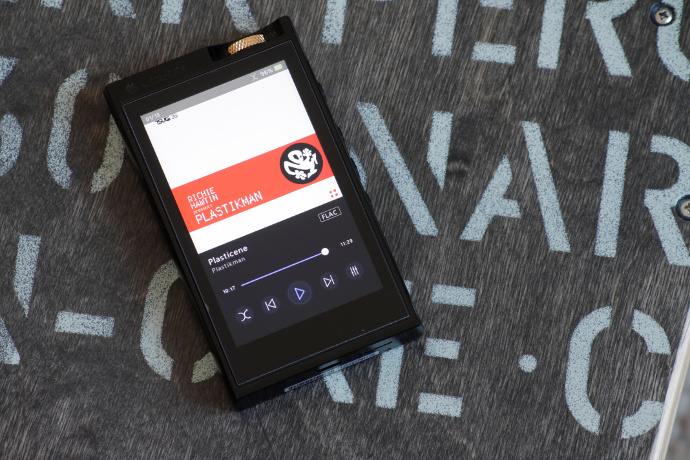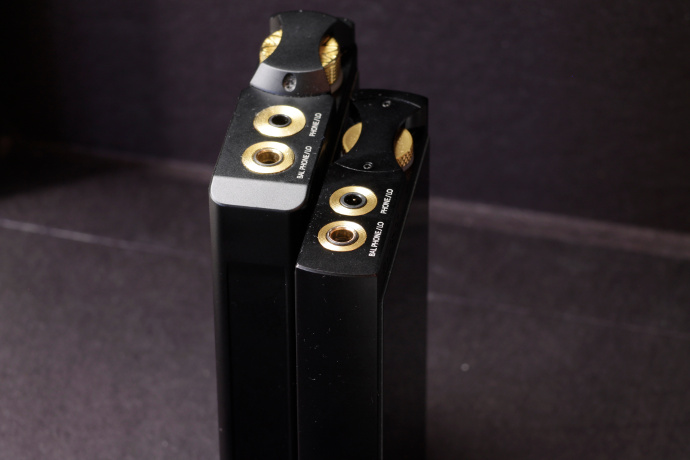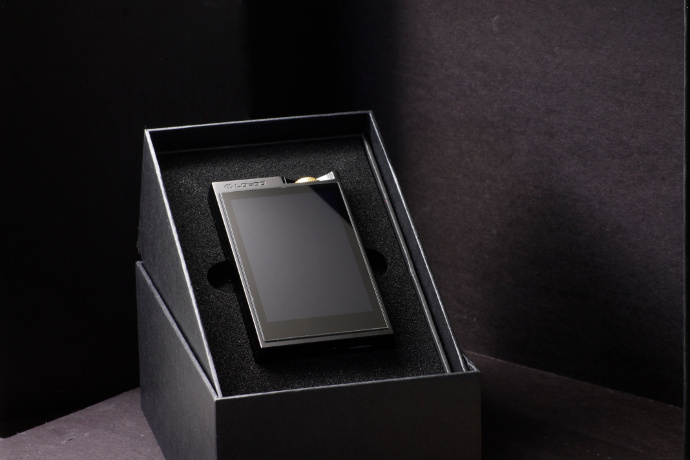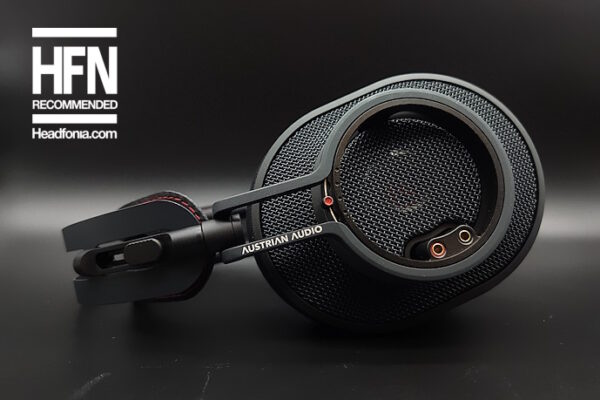Full sized headphones
With 300mW per channel into 32 Ohms the PAW 6000 delivers some juice, but it might not be enough for most over ear headphones. Especially hard to push cans might suffer from under-driving them. Of course, there are easy to drive headphones too. In my personal inventory there are a couple of hard to drive planars, but also some that don’t require a powerful amplifier.
The question of how a DAP can handle headphones comes out very often, and to answer that I have included this here.
I ran my headphones on high gain, as they definitely needed the extra decibels.
Meze – Empyrean
With a sensitivity of 100dB per mW and a rated impedance of 30 Ohms, the Empyrean is definitely one of the easiest to drive high end headphones. I have set the PAW 6000 to volume level 50 on high gain with the Empyrean, and that’s pretty much where my comfort level sits.
The PAW 6000 actually manages to drive the Empyrean quite decent. Which I honestly did not expect. Sure, the Meze benefits from a proper amplifier (I mean quality power, not quantity), but with the Lotoo it reaches satisfactory levels for me.
You get a big and bold bass, with excellent dynamics and texture. The Empyrean has one of the nicest bass-responses in any planar headphone I know. Although, it’s not my ideal signature, it has a certain character that even makes me reach for it. You get superb control and layering into the lowest registers. The upper bass does give a certain notion of warmth into the lower midrange. This makes male vocals particularly weighty and dense.
Instruments and singers are very organic, but with a slightly closed in sound. There could be more room for them to breathe and move around in. Especially since the sound stage is quite narrow, but that is in the presentation of the Empyrean. You get good resolution and accuracy. Transparency could be better with the Meze, but for a portable setup it delivers.
Treble is something that the Empyrean does not produce in high numbers. It pushes other frequencies more in front and gives highs a more laid-back approach.
Of course, Empyrean scales with quality desktop gear, especially in terms of stage dimensions, control and imaging the Meze does see benefits. So, while the Empyrean is playing at good levels with the PAW 6000, it hasn’t reached its peak.

Lotoo PAW 6000
HiFiMAN – HE1000se
The special edition HE1000 is one of my favorites for home listening. It combines a musical sound with a more neutral response and high levels of resolution, stage dimensions, imaging and layering. It just makes everything sound so damn enjoyable to me. Like the Empyrean, the HE1000se does benefit from a good amplifier.
With the HE1000se I also have the volume set to 50 on high gain. Which is enough to reach my comfort listening levels. Here the step down from desktop gear is more obvious than with the Empyrean before. The HE1000se misses some of the magic that always pulls me to it.
Bass is relaxed, with good body still, but it lacks some energy and pump. You get a deep reaching bass, with decent rumble. Bass does not have the best control either. Mids are thin and cold-blooded in emotions. I’m missing body and weight in them. In terms of technicalities the Lotoo also doesn’t get the HE1000se right. The stage is quite closed in, and barely reaches out of my head. What is even worse than this, is the confused structure it keeps. Every musician just seems to be standing in each other’s way.
Treble seems hard edged and harsh, which is not how the HE1000se sounds like at all. This is due to under-delivering in amplification. Amplification is not all about power output. Headphones just need special gear.
I don’t blame Lotoo here. It’s just to show that most headphones still are not adequately powered by portable gear and should be used with quality desktop products in my opinion.
Comparisons:
In this section we’ll see how the Lotoo PAW 6000 fares up against Lotoo’s very own flagship and some of the competition. It’s important to not only look at sound, but also favor in feature set, as DAPs become more and more advanced every year. We see more sophisticated hardware in them from every new release. We will compare features before we dig into the sonic differences.
Lotoo – PAW Gold Touch (3,199$)
Hardware and Features
As mentioned in earlier in the review, the PAW 6000 is to be considered a more affordable version of the flagship PAW Gold Touch. Both come without any on-board storage, so you will have to get yourself some external cards for your music. The PAW Gold Touch needs full sized SD cards while the PAW 6000 takes the more common micro SDs. The PGT supports DSD up to DSD512, where the P6K only goes up to DSD256.
The PGT comes with the more sophisticated hardware design, as it uses a multi-processor design with different systems for the DAC, DSP and wireless sections. They all have their own individual power supplies, which is a technique found in high end HiFi gear. The P6K does not have a hardware DSP and also no sample rate converter. With the PGT you can upsample your files to the highest possible variables in PCM and DSD. Both Lotoo’s also have different opAmp layout and setup, where the Touch has a more advanced solution with multiple opAmps. The PAW Gold Touch also sports higher output power (500mW vs. 300mW) and has an absolute dead-silent noise floor in both gain settings.
Where the PAW 6000 beats the PAW Gold Touch is battery life. The P6K holds its charge about four to five hours longer than the flagship. The extra hardware of the PGT drains more juice from the battery, even though it has higher capacity (5,400mAh vs. 5,200mAh). The PAW 6000 is also a bit more pocket friendly than the PGT, which is heavier and bigger.

Lotoo PAW 6000
Sound
Sonically these two are closer to each other than their prices may suggest. Both have a professional reference grade signature, that places everything first. The PAW 6000 as well as the PAW Gold Touch realize a perfect balance between all frequencies.
There are some noticeable differences between them though. The P6K for example has a slightly bigger bodied midrange and low end, which seem a touch thinner on the PGT. The PAW Gold Touch however, does create a slightly wider, deeper and taller stage. Its resolution is a bit higher and the background is darker, which gives a cleaner spotlight to each instrument. Also, to me it seems the PGT is extended further into both directions.
When using the PEQ it also seems to be more effortlessly integrated in the PAW Gold Touch. Which makes sense, since it uses a dedicated Blackfin DSP for that. The graphic parametric EQ of the PAW 6000 doesn’t seem to manage the same level of sound-refinement as the PGT. Especially with the PEQ pre-set “Headphone” it was noticeable for me. The PGT creates a different perception of sound with scaled stages and a more 3D-like presentation, while the P6K only adjusted frequencies to my ears.
Other than that, I could not really call out big differences. Which is shocking and awesome at the same time.
Astell&Kern – SP1000M (2,499$)
Hardware and Features
Here the differences in hardware and features are a lot bigger than between the Lotoo line. The SP1000M comes with a dual-mono construction. The AK uses two AK4497EQ chips, which are superior on paper to the AK4493EQ of the P6K.
The A&K’s software is based on Android, which gives it the benefit of side-loading streaming applications to the device. It also supports UpnP and can serve as a media server in the home network. All that is not supported by the PAW 6000. The Astell&Kern comes with an internal storage of 128GB and a micro SD card slot for storage expansion. The Lotoo has zero on-board memory.
Both products have support for high resolution Bluetooth. The AK has to acknowledge the Lotoo as superior here though. As Astell&Kern only supports aptX HD (24/48) and Lotoo uses Sony’s LDAC (24/96). On top of the higher sample-rate support, Lotoo also supports bi-directional Bluetooth, while the AK can only be used as a sender. Also, both DAPs come equipped with a parametric equalizer. The one found in the AK only allows for very minute changes in the bandwidth of +/- 5dB and only works properly with 16/44.1 files. The Lotoo’s is mightier and works a lot better. Lotoo also gives you the option to use the digital filters of the AKM chip for further sound shaping. That’s one feature AK always refused to give their customers.
When it comes down to battery life, it’s the Lotoo again that is the last DAP standing. While the AK also goes up to twelve hours, the Lotoo surpasses that by another four hours on the clock. Both come with a highly advanced software, but Lotoo again is superior to me, as it is 100% lag-free and smoother even. And that means a lot.
Sound
The SP1000M and the PAW 6000 do have some similarities but differ in quite a few areas. The AK for example puts more weight into the lower registers. It creates a slightly fuller sound throughout with higher richness and an overall smoother sound. The Lotoo on the other hand stays always faithful to the files and gives you exactly that. The SP1000M also has more energy in the top-end, that can become a bit troublesome for some people. Treble is the area where most people have problems with. If you can’t take much of it, you have to be careful with the SP1000M.
The PAW 6000 has a more evenhanded signature, that doesn’t favor anything in particular. Unlike the AK that tries to create a more exciting sound. In terms of technicalities it is a close match again though. They both draw similarly wide and deep stages, but to my ears it’s the PAW 6000 that goes just that tiny bit wider. The Lotoo has a lower noise floor, where I can hear my super-sensitive monitors fabricate hiss on the AK, I can’t hear it on the Lotoo (in low gain). The P6K has slightly better imaging and separation to me as well.
The final paragraphs about the PAW 6000 are on the last page.








Carlos Costas
Hi! First things first your review it’s great, I have an Astell&Kern AK380, it sounds really good, i think that nowdays it still keeps fighting with the best daps in the market, but i think that for some sorts of music it lacks a little bit of emphasis, (it’s very refined imho), i’m looking for something new and I was thinking about chnage it for an Lotoo Paw 6000 or maybe the Sony wm1a, what do you think about changing it? How are these three daps compared each other soundwise?, do you think that it will be a big donwgrade? I’m just looking for a little more emotion and dynamisn in modern music like pop, vocals. AK380 shines with very good old records and instrumental music (OST, Classic, Jazz).
Finally if you could choose the Lotoo or the Sony, which one would you prefer? and why?
Lots of thanks!
Linus
Hello Carlos,
many thanks for your comment.
Personally, I haven’t heard the WM1A, so I can’t compare it to either the P6K or the AK380. I used to own an AK380 about two years ago. Loved it. But sold it in favor of the SP1000. Haven’t heard the 380 since then and I’m refusing to do comparisons based on memory. Sorry.
I would go with the Lotoo, as it fits my needs perfectly. If you don’t need internal storage (the Lotoo has none) then go ahead with the PAW 6000. It’s pocketable, powerful and has very good battery-life (although the WM1A is keeping a load even longer).
Go with the Lotoo if you want: long battery life, very effective PEQ, fast no nonsense UI, excellent sound (Lieven even prefers it to the WM1Z), robust build quality and consistent firmware updates (Lotoo updates their software constantly even after many years).
Hope that helps!
Cheers and happy new year.
Scotosan
Hi, so is the paw 6000 more neutral and spacious than cayin n6ii? Or is the 6000 warmer? Which do you like better soundwise? I have the n6ii and I like it but it’s so heavy and I’m not really using android.
This looks smaller and closer to what I want – if the sound is as good.
Thanks
Lester
Is the card slot supports uhs-II? Like the gold touch
Linus
Hi Lester,
thanks for stopping by and reading the review.
Yes, I think the PAW6000 also supports UHS-II.
Hope that helps.
Cheers